2022 Hyundai Kona vs. 2022 Volkswagen Taos: The Numbers
Hyundai and Volkswagen have big news for 2022. The former is significantly refreshing the Kona and adding new technologies to its small crossover, while the latter is introducing the all-new Taos as a replacement for the standard Golf.
Which one is better? To help settle the debate, we’ve compared the numbers and specs for these two models. Here’s what we found…
- Also: 2022 Hyundai Kona N Debuts as 276-Horsepower Hot SUV
- Also: 2022 Hyundai Kona Gets New CVT, More Powerful Turbo Engine
Powertrain: Kona
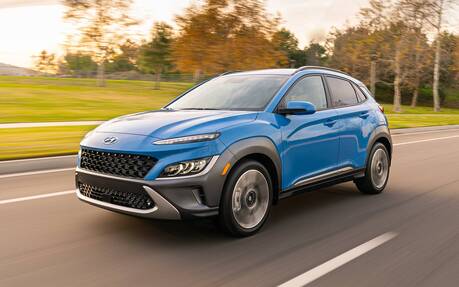
These two SUVs adopt slightly different powertrain strategies. The Volkswagen Taos is only available with a turbocharged 1.5-litre four-cylinder engine that produces 158 horsepower and 184 pound-feet of torque. FWD models get an eight-speed automatic transmission, while AWD variants rely on a seven-speed dual-clutch unit.
On the other hand, the Hyundai Kona currently offers three options. The naturally aspirated 2.0-litre engine is rated at 147 horsepower and 132 pound-feet of torque, and mated to a CVT. AWD is available. Next up is a turbocharged 1.6-litre mill increasing output to 175 horsepower and 195 pound-feet of torque. A seven-speed dual-clutch transmission and AWD system handle power distribution. Also, there’s the zero-emission Kona Electric that delivers 201 horsepower and 291 pound-feet of torque.
We’re not even counting the upcoming, 276-horsepower Kona N, so Hyundai is clearly the winner in the powertrain department.
Fuel Economy: Kona
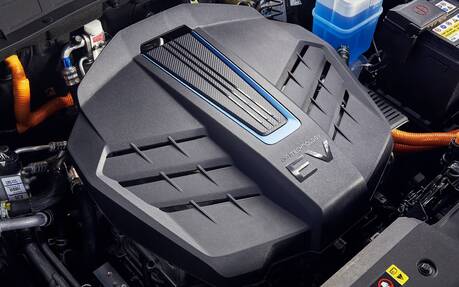
Unsurprisingly, the Kona is more efficient with a zero-emission variant providing a range of 415 kilometres (using a 64-kWh battery). It can charge from 10-80 percent in about 47 minutes when plugged into a DC fast charging station, or from 10-100 percent in just over nine hours when a level 2 (240V) power source is used.
The Kona’s combustion engines burn less fuel, as well. The 2.0L achieves 7.4 L/100 km (FWD) or 7.9 L/100 km (AWD), while the 1.6T is rated at 8.2 L/100 km.
On the other hand, the Taos needs a combined 7.6 L/100 km in FWD configuration. If you select a 4Motion-equipped model, expect 8.5 L/100 km.
Utility: Taos
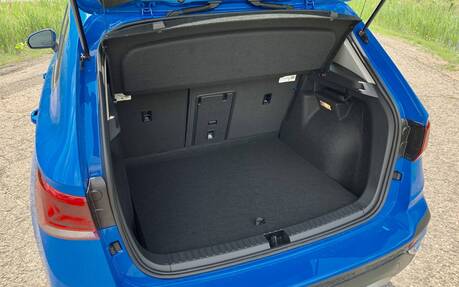
The larger Volkswagen Taos is naturally more spacious, giving it the edge when talking about cargo capacity. FWD models can fit up to 790 litres in the trunk or 1,866 litres behind the first row. These numbers are slightly less impressive—705 and 1,704 litres, respectively—in AWD configuration.
The Hyundai Kona is nowhere near as capacious with a trunk capacity of 544 litres that expands to 1,296 litres when you fold the rear seats down. On the plus side, its smaller size and shorter turning radius allow greater manoeuverability around town.
Safety: Kona

Volkswagen requires Taos customers to select Comfortline or Highline models to get advanced safety features like emergency braking with pedestrian detection, blind spot monitoring, rear cross traffic alert, and steering-responsive headlights (Highline).
The Kona comes standard with a number of Smartsense safety features including lane departure warning with lane keeping assist, forward collision-avoidance assist with pedestriand detection, and driver attention warning.
Technology: Tie
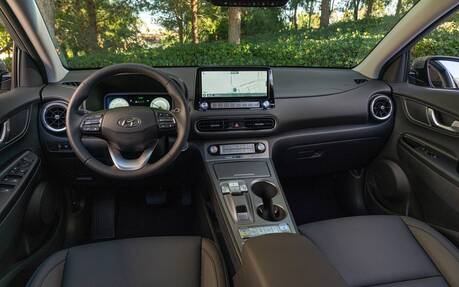
When it comes to in-car technology, you get pretty much the same content in both vehicles, starting with wireless Apple CarPlay and Android Auto compatibility, available wireless phone charging and available premium audio.
In the VW Taos, the centre display is either 6.5 or 8.0 inches. The Kona does have a larger screen at 8 or 10.25 inches. The former also comes standard with an 8-inch digital instrument cluster, whereas the latter is limited to 4.2 inches. Both are optionally available with a 10.25-inch driver display. Only the Kona can be had with a head-up display, mind you.
Price: Kona
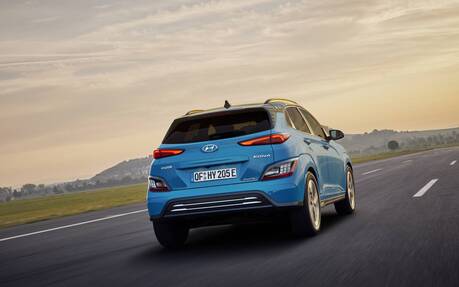
These are two competitively priced SUVs, but Hyundai found a way to make the Kona more affordable than the Taos. Below are pricing details excluding destination charges:
- Hyundai Kona:
- Essential: $21,999 (+ $2,000 for AWD)
- Preferred: $23,999 (+ $2,000 for AWD)
- N Line AWD: $28,099 (+ $5,600 for Ultimate package)
- Electric (2021): $44,999
- Volkswagen Taos:
- Trendline: $26,695
- Trendline with 4Motion: $29,195
- Comfortline: $32,395
- Highline: $36,695
Also, keep in mind that the Hyundai Kona Electric is eligible to a federal EV rebate of $5,000 and provincial rebates of up to $8,000.
Warranty: Tie
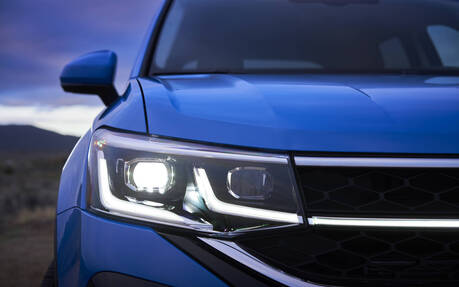
Whichever model you choose, powertrain coverage is 5 years/100,000 km. The Kona has a limited new vehicle warranty of 5 years/100,000 km, while the Taos is backed for 4 years/80,000 km.
Volkswagen offers more generous rust perforation coverage at 7 years/unlimited km versus Hyundai’s 5 years/unlimited km warranty.
In the case of the Kona Electric, components of the electric drive system are covered for 8 years/96,000 km.
